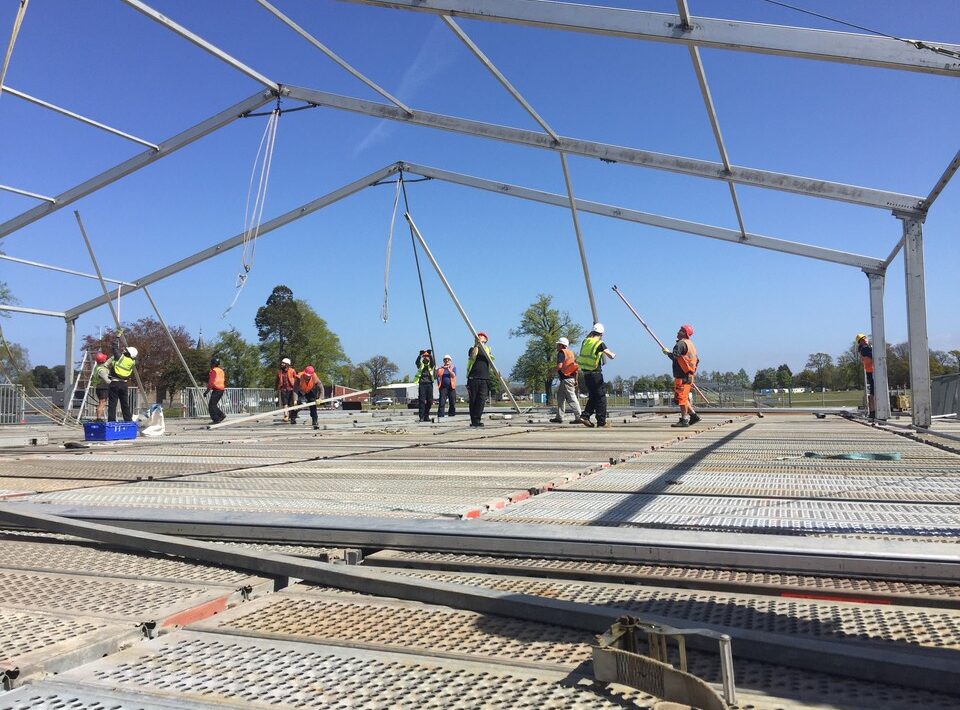No construction project is complete without a temporary structure as it is basic foundation of any project. So, to guarantee security, effectiveness, and utility, temporary structures must be designed with care.
In this blog, we’ll look at the important factors to take into account while constructing temporary structures.
Purpose and Functionality
The first and foremost consideration when designing a temporary structure is its intended purpose. Whether it’s a construction scaffold or disaster relief shelter, understanding the purpose is essential for making informed design choices.
Site Analysis
Conducting a thorough site analysis is crucial for temporary structure design. Factors such as soil conditions, wind loads, seismic activity, and nearby structures must be assessed to ensure the structure’s stability and safety. Engineers should also consider environmental conditions, like temperature and precipitation, which can affect the structure’s performance.
Material Selection
Choosing the right material is paramount for the safety and efficiency of temporary structures. Materials should be selected based on factors such as load-bearing capacity, durability, and resistance to environmental elements. Lightweight, high-strength materials are often preferred to simplify assembly and disassembly while maintaining structural integrity.
Structural Design
The structural design of temporary structures should adhere to engineering principles. Calculations for load distribution, stability, and structural integrity are essential. Engineers must also consider factors like bracing, anchoring, and the arrangement of structural components to prevent collapses or accidents.
Safety Standards and Codes
Compliance with relevant safety standards and codes is non-negotiable. Temporary structures must meet local building codes, industry regulations, and safety standards specific to their use. Regular inspections and adherence to safety guidelines help prevent accidents and ensure worker and user safety.
Assembly and Disassembly
Temporary structures are by definition temporary, so ease of assembly and disassembly is critical. Designing structures that can be quickly and safely erected and taken down not only saves time and labor costs but also reduces the risk of accidents during these processes.
Environmental Impact
Sustainable design principles should be integrated into temporary structure design whenever possible. Choosing eco-friendly materials, minimizing waste, and optimizing energy efficiency contribute to both environmental responsibility and cost savings.
Temporary structure design is a challenging task that needs close attention to every little detail. So, hiring experts like temporary structure engineer NadeauSDM is recommended for ensuring safety and structural efficiency. They specialize in designing and constructing safe and efficient temporary structures for extensive building projects.


